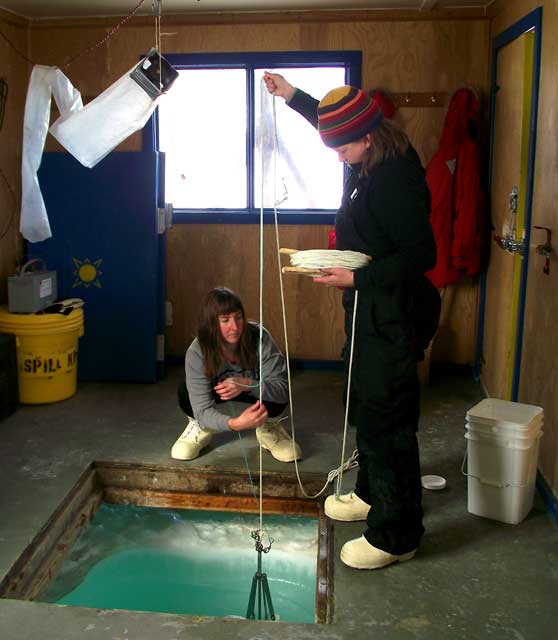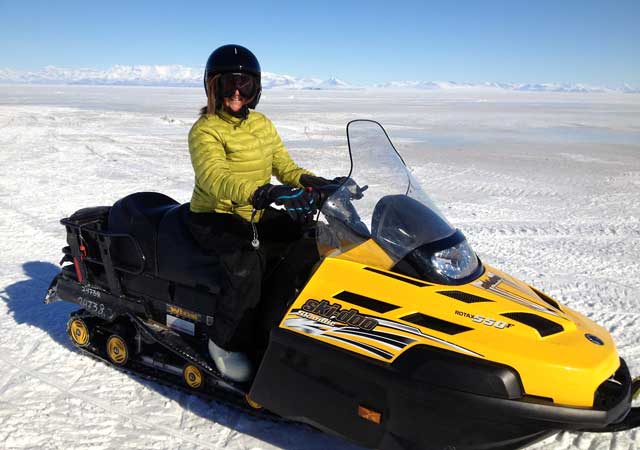|
Poetic licenseJynne Martin writes about her experience with scientists, seals and heading SouthPosted December 20, 2013
For centuries of human history, maps of the known world had nothing at the bottom save drawings of sea serpents and dragons, warning sailors against the vast unknowns of the South. Even since Capt. James Cook discovered and charted the outlines of Antarctica, few humans have ever got to visit or live on this continent. Antarctica still retains the quality of those long-ago sketched dragons: a colossal, uninhabited, frightening space of mystery and unanswered questions. I’ve been obsessed with the vastness, beauty and intrigue of Antarctica since I was a little girl; I scissored out photos of icebergs and penguins from National Geographic and devoured polar journals and diaries. A few years ago, when I learned there was an Antarctic Artists and Writers Program I proposed embedding with various science teams who were working with the animals of Antarctica, ranging from the seals and penguins to the lesser known – but even more fascinating – fish and microbial colonies in the soil. I wanted to be immersed in the vernacular of the scientists, to observe their processes, and better understand how these animals had adapted to not just survive, but thrive, in the most strange and barren circumstances, and then to write poetry as well as nonfiction about these experiences. I was thrilled to be awarded an NSF grant to spend time with four different science teams, and to travel with them by foot, Hägglund, snowmobile and even helicopter to live in their field camps, ask my questions, and observe and assist with their work. Most writer residencies around the world involve living in a quiet, remote, well-equipped cabin with other writers and artists for a few weeks at a time; this couldn’t have been a more opposite experience. Physical toughness, hard labor, and a good sense of humor about living in a very raw way are required of everyone who comes to Antarctica, including the writer grantee. 
Photo Courtesy: Jynne Martin
Jynne Martin, seated, assists scientist Anne Todgham to collect fish specimens for a study on the effects of ocean acidification.
Every newcomer has to take a two-day snow survival course called “Happy Camper”; I spent a miserably cold night in a snow cave of my own making. I had many long days on the sea ice in easily minus 20 degrees Fahrenheit wind chill, with no shelter to go get warm; I’ve been responsible for driving my own snowmobile long distances, learned to change sparkplugs, pitched tents on snow and ice, used buckets as toilets, and many days ate just lentils and nuts. Because I’ve done a fair amount of international trekking and I thrive on rougher travel, I absolutely loved these challenges, but anyone interested in coming to Antarctica should be aware this is not for the faint of heart. I expected my time in Antarctica to be the most thrilling experience of my life, yet every day here exceeded even my highest expectations. The work of Antarctic scientists was mind-blowing to witness up close: the glaciologists who are melting ancient ice and saving the trapped air bubbles in green canisters; the astrophysicists trapping neutrinos from outer space in a giant ice cube; the office down the hall from me simply labeled, astonishingly, THE ANTARCTIC SEARCH FOR METEORITES. I got to listen to the heartbeat of a mother seal, watch a sea urchin egg fertilize under a microscope, ride helicopters over vast glaciers, help shoot a laser into the upper stratosphere, climb inside an ice cave, and have an Adélie penguin pull on my shoelaces. 
Photo Credit: Jynne Martin
Seal researchers led by Jenn Burns prepare to head onto the sea ice near McMurdo Station, seen in the background.
I spent afternoons digging through the McMurdo Station The hardest part of this experience was leaving to go home. Antarctica may be the only place on Earth that I’ve had to leave knowing I may never get to return. Adm. Richard Byrd famously wrote, “Part of me remained forever at Latitude 80 degrees 08 minutes South,” and I feel the same way. When you first arrive and step out of the military cargo plane onto the sea ice, you see light and colors and vastness like you’ve never seen before; the blinding whiteness and rainbows dancing off snow make it seem as though you’ve entered Valhalla. Antarctica is even greater and more mysterious than my girlhood dreams, and I will always carry this place with me. Jennifer “Jynne” Martin |



For USAP Participants |
For The Public |
For Researchers and EducatorsContact UsU.S. National Science FoundationOffice of Polar Programs Geosciences Directorate 2415 Eisenhower Avenue, Suite W7100 Alexandria, VA 22314 Sign up for the NSF Office of Polar Programs newsletter and events. Feedback Form |



